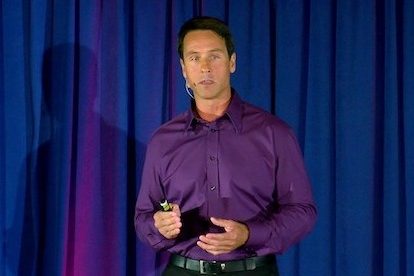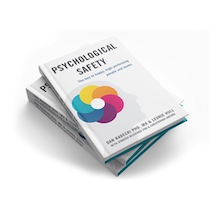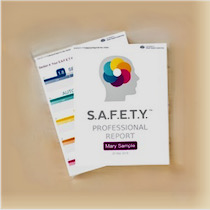When I was 18, I worked in a factory producing windows and doors. I was a starry eyed young person ready to make my mark on the company. I was also fortunate to have graduated from a high school with a special robotics program where I spent 3 years learning and exploring manufacturing concepts. I had even won multiple awards from the Society of Manufacturing Engineering at University level for my display of skills and abilities. You would think this technical know-how would have been a great advantage to me in my first manufacturing job, but let me tell you what actually happened.
At the company, I started off as a “specialty glass puller”. My job was to simply grab the order forms for the day, pull the proper size glass sheets from inventory, and sequence them on staging carts so the glass cutters could cut those specialty pieces to go into custom windows. When I arrived, the glass warehouse was a disaster. The shelves were about 20 feet high and filled with half empty crates of glass. The isles were full of glass from the delivery a week before. It took 3 people to pull those specialty pieces of glass because we could never find where things were. We had a fork truck driver who was usually difficult to find, but the isles were so full of inventory that it took forever for him to shuffle things around in any meaningful way, which meant we were usually waiting for something. Though there were 3 people pulling glass, many people never showed up for work, and no one lasted long at my job. Usually not more than a couple days.
About 2 weeks into my very boring job, my boss asked me if I wanted to learn how to drive the forklift since it seemed we needed a second driver. I learned in about a week and took the final exam. I was now a freshly minted fork truck driver. One week after that, my manager decided to run for political office as a libertarian and quit his job. Two days after that, the normal fork truck driver was caught in the bathroom drinking and was fired. So, within the span of about a month, I went from glass puller to the manager of the warehouse, the fork truck driver, and the glass puller.
Of course, I did what any starry eyed high school graduate would do, I jumped in and redesigned everything using all my technical know-how. I created a warehouse map and everything had its location. I standardized the pallets for the different glass sizes. I worked with the people ordering the inventory to make sure they ordered what was needed instead of what their uninformed forecasts predicted. My work bore fruit. Receiving inventory and stocking times dropped from 2 weeks to about 6 hours. There was no need for specialty people to pull glass, I was able to do all the warehouse jobs alone and even had time to learn how to cut glass with the specialty glass cutters. The warehouse was clean and organized and my boss and the management was very happy. So, what was the problem?
Well, the staging person for the windows, who managed the next step in the process HATED me. She did not appreciate what I had done. She did everything she could to put barriers up to me doing my job. She assured my concepts never went beyond the warehouse. We both reported to the same boss, who refused to get involved saying he understood both points of view. Her point of view was that I eliminated jobs without getting anything for the employees, and put other people’s jobs at risk. My point of view was that I was making everyone’s jobs easier and safer to do, including my own. The fact was, I was showing that things could be done differently and that scared her. She was scared of change and progress which she took out on me in so many hateful forms including sometimes verbal threats and stonewalling initiatives I wanted to take.
Almost 20 years later, I learned about how the brain worked and I started to understand what was going on with her. This was a woman who listened to the same song over and over and over all day long. She stood at the same podium every day doing the same thing, acting like an air traffic controller for the part of the window that goes in between the two pieces of glass. She had a very comfortable routine that she had habituated to over some time. She stuck with her routine religiously, as did many of the other factory workers as a means and requirement to survive as a laborer in a tedious manufacturing environment. When I made changes, I messed with her security. In the best case, I made her future uncertain and in the worst case I was attacking her own sense of esteem in her position. I became a threat by being an agent of change.
As we know from neuroscience, our brains have many more circuits dedicated to finding threats than rewards. If the threat is physical, like a snake or bear approaching us, our bodies and minds initiate a waterfall of activities specifically to prepare us to run away or fight. This happens automatically, without our needing to think about it. When a threat is abstract, a very similar waterfall of events happens. We check the abstract concepts of Security, Autonomy, Fairness, Esteem and Trust many times per second looking to be sure there are no changes that can threaten our current circumstance. These threats to our S.A.F.E.T.Y.™ show themselves through change. If we were out in the woods at night, a threat would be noticed through a change of sound such as the stopping of crickets chirping, or odd changes in tree or grass movement. But in the work environment, the signals come in the form of process, system, or personnel changes. Any and all of the changes above, especially if not expected, heighten our awareness and activate the threat circuitry in the brain.
We yearn for the present to stay unchanged or, if it is going to change, we desire for it to change in a predictable way that fits our expectations. Any changes that do not fit into our existing paradigm creates an expectation gap or a conflict. That expectation gap or conflict causes a threat reaction as our brain works to resolve it. Our brain naturally can go negative, looking for all the possible things that can go wrong as we fit this new piece of information into our forecasted world view. Of course, all of our biases, preconceived notions, and experiences are brought to consideration while our brain searches for the simplest and safest new forecast. Sometimes, this forecast is consciously accessible and can be expressed, but many times, the forecast is unconscious and bubbles up only as a hidden trigger of emotions.
In the case of my colleague at the window factory, her brain unconsciously decided I was a threat and her conscious mind simply decided she did not like me. As she refused to talk about and resolve the differences, probably because she was now comfortable in her internal justifications about me and my new methods, there was no route to a resolution. She had simply closed off and turned inwards to her own world. She set internal and external boundaries and used whatever power she had access to resist me. That power included stonewalling initiatives, talking badly about me behind my back, and grabbing floor space when it was most inconvenient for me. Our boss simply did not want to deal with conflict, he did not want to make anyone upset, so he left it to “work out by itself”. The situation eventually worked itself out when I left the company to return to school for my engineering degree. I visited a year later and the warehouse went back into disarray, but she seemed very content with me no longer being there.
Eventually and unfortunately, that factory closed with everyone losing their jobs, I assume because it was inefficient compared to other facilities and therefore not profitable enough to remain open. Did the dysfunction contribute to the eventual closure? I can only speculate. What is certain is that the dysfunction did not help the situation. The important question is, what could have been done differently to resolve the dysfunction?
In my opinion, as an 18-year-old, I had no idea that I was pushing her buttons regarding security and esteem. From my naive perspective, the priority was to making the factory operations better. Personal issues with that direction were inappropriate in the working environment. I had ignored the “person” in lieu of the processes and suffered the consequences. Now, that does not make her “right” either as she seemed oblivious to her own triggers and was stuck in a mental construct that prevented progress that, in the end, may have been able to save her job. Furthermore, without a boss with tools and training to manage the situation, there was no way out except for an all-out war or one of us leaving; neither were good results for the company.
Today, with the help of the research associated with the S.A.F.E.T.Y.™ Model, tools exist to train managers and help employees and teams become aware of their own and others sensitivities and triggers.
The Academy of Brain-based Leadership has assessments, training, and coaching to support team work and help facilitate companies through change, build strong teams, and create resilient team members. Learn more about S.A.F.E.T.Y.™ in the book “Psychological Safety: The key to happy, high-performing teams” for insights into how it can help your company improve, or take the S.A.F.E.T.Y.™ assessment to find out your top sensitivity for free or upgrade to receive your full profile report.










